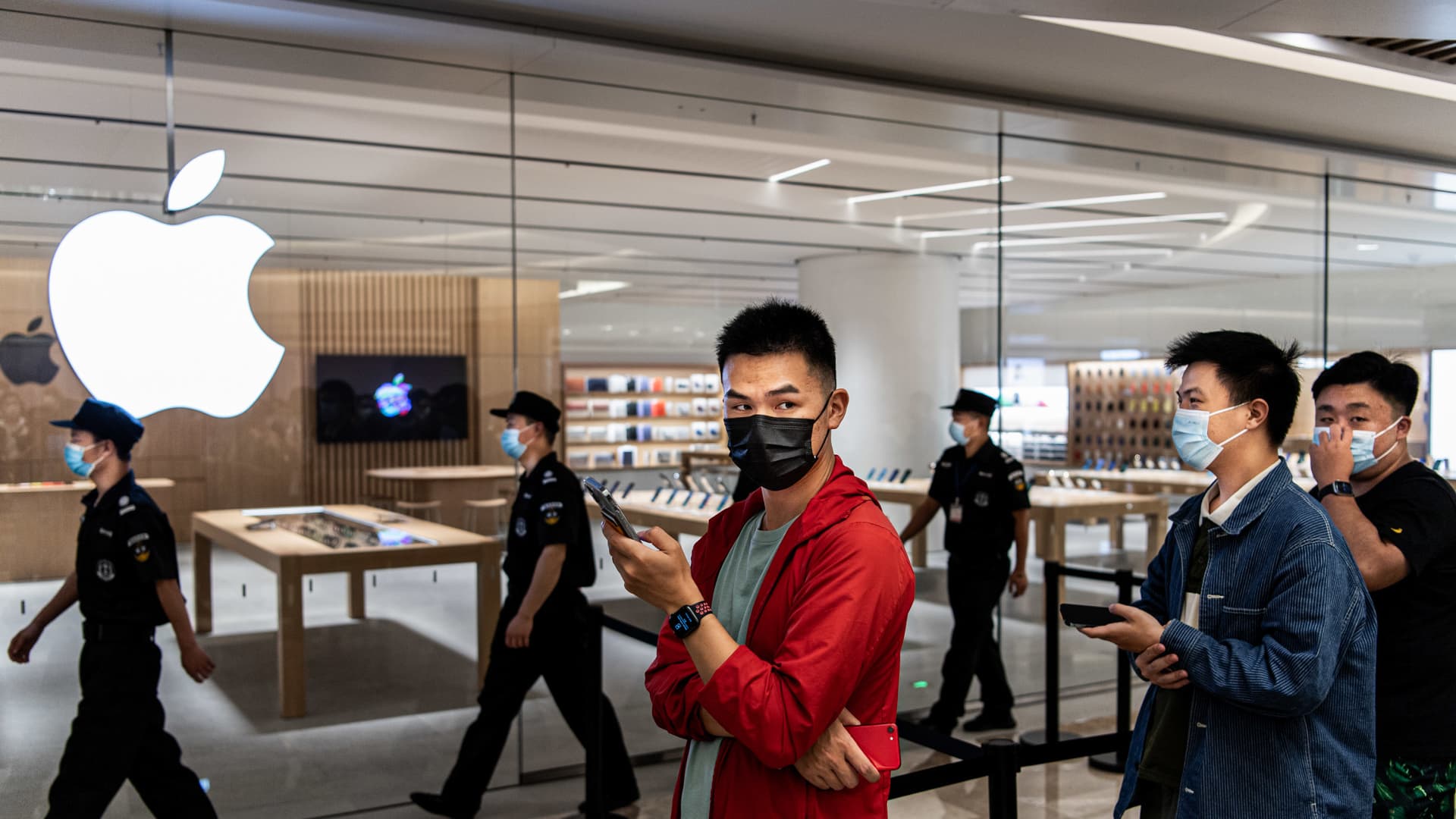
Apple opened its 54th flagship store in Greater China, Wuhan, in May. The iPhone company warned in late April that a supply chain disruption from Covid Control in China could reduce sales by $ 4 billion to $ 8 billion this quarter.
Sopa Images | Light Rocket | Getty Images
Credit Suisse analysts said in a report this week that Beijing-Apple’s supply chain has a brighter outlook than Android when it comes to recovering from the shock of China’s latest Covid control.
Shanghai, a port city in a high-end manufacturing area, reopened on June 1 after a blockade of about two months to curb the relapse of the Covid case. Neighboring cities have also intermittently shut down to curb the Covid epidemic.
Credit Suisse research analyst Edmund Van and the team said, “Overall hardware production is gradually at normal levels in June and July as Apple’s supply chain outlook is brighter than Android. But semiconductors are more of a demand issue than a supply. ” I will report on Monday.
“Our checks suggested that the iPhone 14 build schedule remained the same, but early production was low due to production delays for certain models and a shortage of some parts / chips. It will be, “says the report. “I think the overall production order for the new model will remain the same as last year, but the final production volume may vary due to supply interruptions.”
Apple didn’t immediately respond to CNBC’s request for comment. Greater China, including Hong Kong, accounts for about 19% of the company’s sales.
Apple: “More Flexibility”
Last week, iPhone supplier Foxconn said the impact of China’s Covid control wasn’t as bad as expected, and the company’s full-year outlook was better than it was at the beginning of the year.
Foxconn (also known as Hong Hai) said operations are normal in key production areas of mainland China, where the company has more than 30 offices. However, Foxconn said the Covid situation is likely to continue and the company plans to improve its operational capabilities within the bubble.
Local governments in China allow manufacturers to operate in Covid restricted areas if the factory keeps workers on site. However, companies say that travel restrictions prevent trucks from transporting parts between factories and customers.
“We believe Apple’s supply chain is more flexible than Android. [Apple] Assembler Hon Hai has a very diversified capacity allocation, “Bank of America analysts wrote in April.
According to analysts, only 5% of Hon Hai’s capacity is in the eastern city of Shanghai and nearby Jiangsu Province, 10% to 20% in the “Greater Bay Area” around Hong Kong and Shenzhen, and capacity in the other two regions. Notice that has been added. Not only in China, but also overseas.
Foxconn did not immediately respond to CNBC’s request for comment.
Android: Focus on China
In contrast, 80% of Android’s production capacity is in the Greater Bay area and eastern China, especially in Shanghai and Suzhou, Jiangsu Province, the Bank of America report said.
Android is an open source mobile operating system developed by Google and is the basis for many popular Chinese smartphone brands such as Oppo and Xiaomi.
However, analysts at Bank of America and Credit Suisse said the bigger problems for Android suppliers are their reliance on the Chinese market and declining domestic demand for smartphones.
According to Canalys, first-quarter smartphone shipments fell 18% from a year ago, down from 11% worldwide. This shows that the Chinese market has been sluggish for nearly three years.
According to Canalys, Apple’s shipments from mainland China increased 17% year-on-year in the quarter, while shipments from brands such as Oppo and Vivo, which have large market shares, fell 44% and 34%, respectively. Honor, a spin-off from Huawei, tripled its first-quarter shipments from last year’s lows.
“Omicron COVID-19 mutant outbreaks and strict blockades in major cities from February have cast a shadow over the consumer market, which has not yet recovered from last year’s weaknesses,” Canaris analyst Toby said. Mr. Chu said in the announcement. “In response to sudden retail closures and logistics delays, vendors need to take a more cautious approach to inventory allocation, which inevitably impacts marketing in the short term. . “
— CNBC’s Michael Bloom contributed to this report.
..
